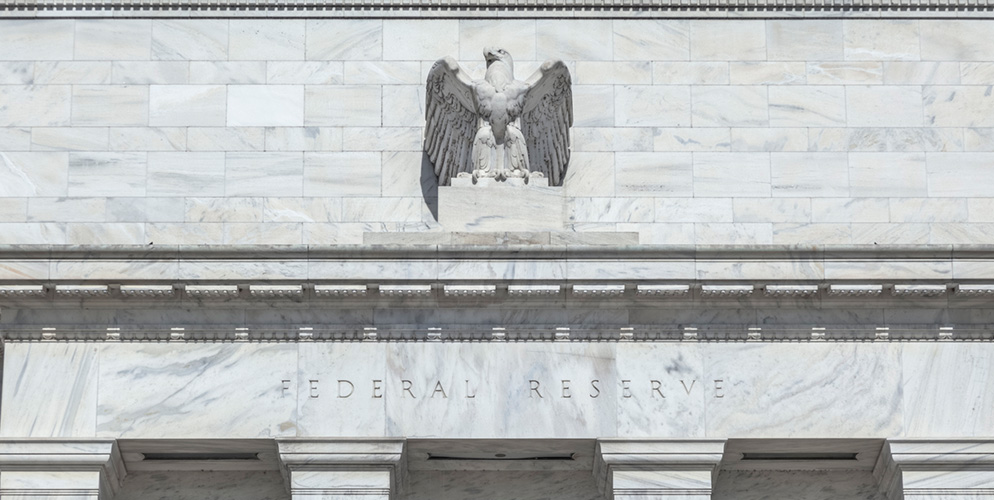As we approach the end of the first half of 2023, we continue to be mired in the trappings of monetary policy. After 10 consecutive rate hikes, the FOMC left the target range for the benchmark Fed funds rate at 5.0% - 5.25% at the June meeting. While this move was widely anticipated, the overly hawkish tone was accompanied by a revised "dot-plot" showing two more rate hikes to come by year-end and no indications of a pivot to lower interest rates any time soon. In our humble opinion, after 500 basis points of policy tightening, expanding pockets of economic softening, and meaningful, albeit insufficient, evidence of inflationary containment, the Fed can afford to hold its short-term benchmark steady while reassessing the domestic backdrop throughout the ensuing 5 ½ weeks, with a wide-open mind for a possible rate increase at the July FOMC. In our view, there is an expected delayed reaction to the Fed’s tightening cycle as well as to the recent banking stress, and for a soft-landing, or even a mild recession to result, we are simply saying it's fine for the Fed to take a breath here. Our position does not stem from a bleak outlook for the economy, but rather thoughtful consideration of an appropriate time for the Fed to take stock of its prior cyclical actions against a backdrop of economic resiliency, albeit with noted growth concerns, and relatively stable loan activity despite the potential for additional bank closures.
Having said this, we are in no way diminishing the importance of keeping the inflationary pace on a downward trajectory with the intent of meeting the Fed’s 2% target. We recognize that in order for inflation to move considerably lower, there would need to be an attendant lift in the unemployment rate, and perhaps the stars are aligning to deliver on this presumption. Announced corporate layoffs from multiple-size firms have been part of the employment narrative for much of 2023, but have yet to make their way into meaningful job displacement. Let’s recall that the softer-than-expected wage gains for May underscore the absence of a wage/price spiral and continue to perhaps re-direct the inflationary focus away from labor costs and towards other pricing pressures. For now, we see near-term labor reports continuing to reveal a mixed story while showing signs of overall economic health and resiliency, which would likely drive consumer spending patterns and growth performance. Of course, a deeper analysis of specific areas of job formation along with associated wage ranges help to gauge overall anticipated stability of the labor market, and may provide some insight over potential pockets of employment vulnerability ahead of the next recession.

Given favorable muni technicals, movement to cheaper ratios during periods of market weakness may be less pronounced, and any performance bias would likely favor munis.
Admittedly, the “dot-plots” do provide collective insights into individual Central Banker thinking and they help market stakeholders to parse through the increasingly divergent views among policymakers. The new "dot-plots" show an elevation in the median anticipated funds rate for this year and next, and we see downward revisions to the median unemployment estimate along with a better outlook for GDP in 2023. Chair Powell needed to be all things to all people during his post-FOMC press conference and with a steady funds rate, we heard unambiguous statements that the Central Bank stands ready to renew its tightening cycle to suppress growth and pull inflation lower, if necessary, even though raising rates after a pause is not the norm. Given that so much of the heavy tightening lifting has already been accomplished, it stands to reason that the path to cyclical policy completion may be bumpy and uncertain. We are not in the rate cut camp at this time based upon still persistently high inflation, the resilient performance across certain segments of the economy, and potentially unintended and adverse consequences of abrupt policy shifts absent a catalyzing event. As expected, Chair Powell continued to refrain from inviting rate cuts into the Fed’s policy calculus.
The overall value of fixed income investing has become considerably more pronounced given the level of absolute yields and the cash flow opportunities that were absent for about a 10-year period. These cash flows can provide defensive and diversifying portfolio attributes during an economic downturn and can help to offset those factors that may generate adverse performance consequences. Just how long the Treasury curve remains inverted will be materially impacted by future interest rate moves. Given the waning, but still present, probability of further rate hikes, curve steepening trades may have more accretive outcomes than those with a flattening bias, should the Treasury inversions recede by year-end and cuts are made to the funds rate in 2024. With this scenario, greater price appreciation may be witnessed along shorter tenors with more tempered performance (i.e., positive sloping) along the back end of the Treasury curve. Munis had been well-grounded leading into FOMC with the tax-exempt curve largely unchanged, and similar performance was noted through the remainder of the week as tax-exempts broke free somewhat from Treasuries. Munis had been making an effort to outperform Treasuries with relative value ratios moving a bit lower. The firmer muni tone is a welcome change from the pronounced sell-off during May when rate anxiety and a debt ceiling showdown took hold. The currently available cash flow opportunities previously described for fixed income become more pronounced for munis given their tax-efficient attributes. The overriding theme for munis is the supportive technical backdrop that is not expected to match new-issue supply with the heavy reinvestment needs over the next few months. It comes as no surprise that the primary calendar had dropped significantly from the prior week’s new-issue plate given the usual and expected issuer sidelining ahead of a Fed policy meeting.
After seeing positive fund flows following 16 consecutive weeks of outflows, net negative flows returned during the most recent reported period. Noted interest in the more attractive absolute yields and cash flows can bring about episodic in-flows and munis can potentially earn favorable returns with longer-term muni investing at a time when cash allocations into ultra-short Treasuries have become the trade of the day. While munis are set up for better performance, perhaps modest single digit returns, the near-term outlook for fund flows will make for a challenging read. We suspect that perhaps more rate certainty needs to be introduced into the investment calculus before a more enduring commitment materializes. Having said this, stronger muni performance, with relative out-performance, can come about even if we do not see a near-term return to a positive flow bias. Given favorable muni technicals, movement to cheaper ratios during periods of market weakness may be less pronounced, and any performance bias would likely favor munis. If we do see cheaper ratios, we would advise active consideration of munis at more attractive entry points with performance opportunities even more compelling should muni prices advance.

Jeff Lipton
Title:Managing Director, Head of Municipal Credit and Market Strategy
85 Broad Street
26th Floor
New York, New York 10004

